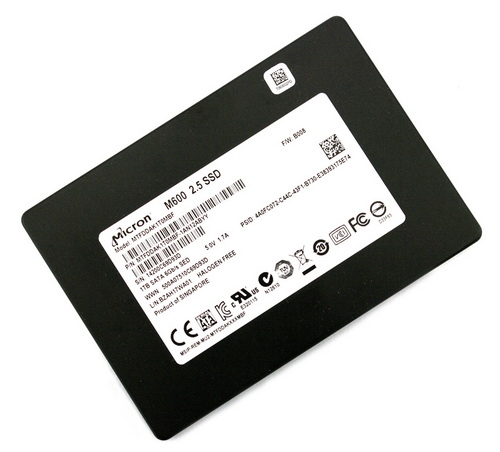INTRODUCTION
If you're reading these lines right now you don't need me to tell you that solid state drives have turned the market upside down lately with their somewhat substantial price cuts. Sure SSDs are still nowhere close to even challenging the price/capacity ratio regular HDDs have been enjoying since pretty much forever but at least now people can get their hands on even 2TB models without having to spend their entire monthly paycheck. Of course 2TB SSDs cost roughly 3 times as much as a regular 8TB HDD so if lots of storage capacity is what you want then i see very little reason in getting such an SSD right now. On the other hand 480/512GB SSDs are very affordable and have become surprisingly popular among gamers, enthusiasts and professionals who are after fast read & write speeds and sufficient storage space. Well since right after our Micron M510DC 480GB review some of you asked today we'll be testing the M600 512GB model.
Micron Technology, Inc., is a global leader in advanced semiconductor systems. Micron’s broad portfolio of high-performance memory technologies—including DRAM, NAND and NOR Flash—is the basis for solid state drives, modules, multichip packages and other system solutions. Backed by more than 35 years of technology leadership, Micron’s memory solutions enable the world’s most innovative computing, consumer, enterprise storage, networking, mobile, embedded and automotive applications. Micron's common stock is traded on the NASDAQ under the MU symbol.
Just like the Crucial MX100 for the M600 lineup (currently available in 128GB, 256GB, 512GB and 1TB capacities) Micron has made use of their newest 128Gbit 16nm NAND flash which they've paired with the Marvell 88SS9189-BLD2 NAND flash controller. The M600 also fully supports AES 256-bit hardware encryption, TCG Opal 2.0 & IEEE-1667 (eDrive is supported) and features dynamic write Acceleration (MLC NAND behaves like SLC NAND via firmware tweaking / only available in the 128/256GB variants), 300TBW endurance, RAIN technology, partial power loss protection (data-at-rest), DevSleep (power saving), Momentum Cache (makes use of DRAM bandwidth to achieve increased burst performance) and adaptive thermal monitoring. The real question now is to see exactly how the M600 compares not only with the M510DC but also against other similarly priced models.

 O-Sense
O-Sense










